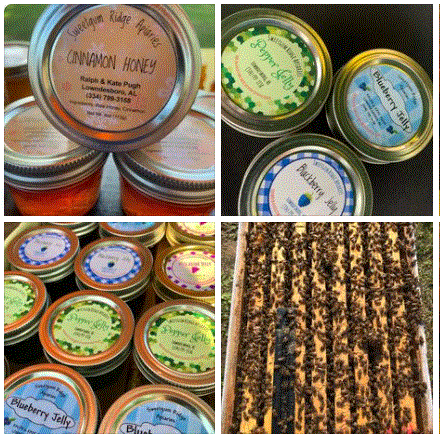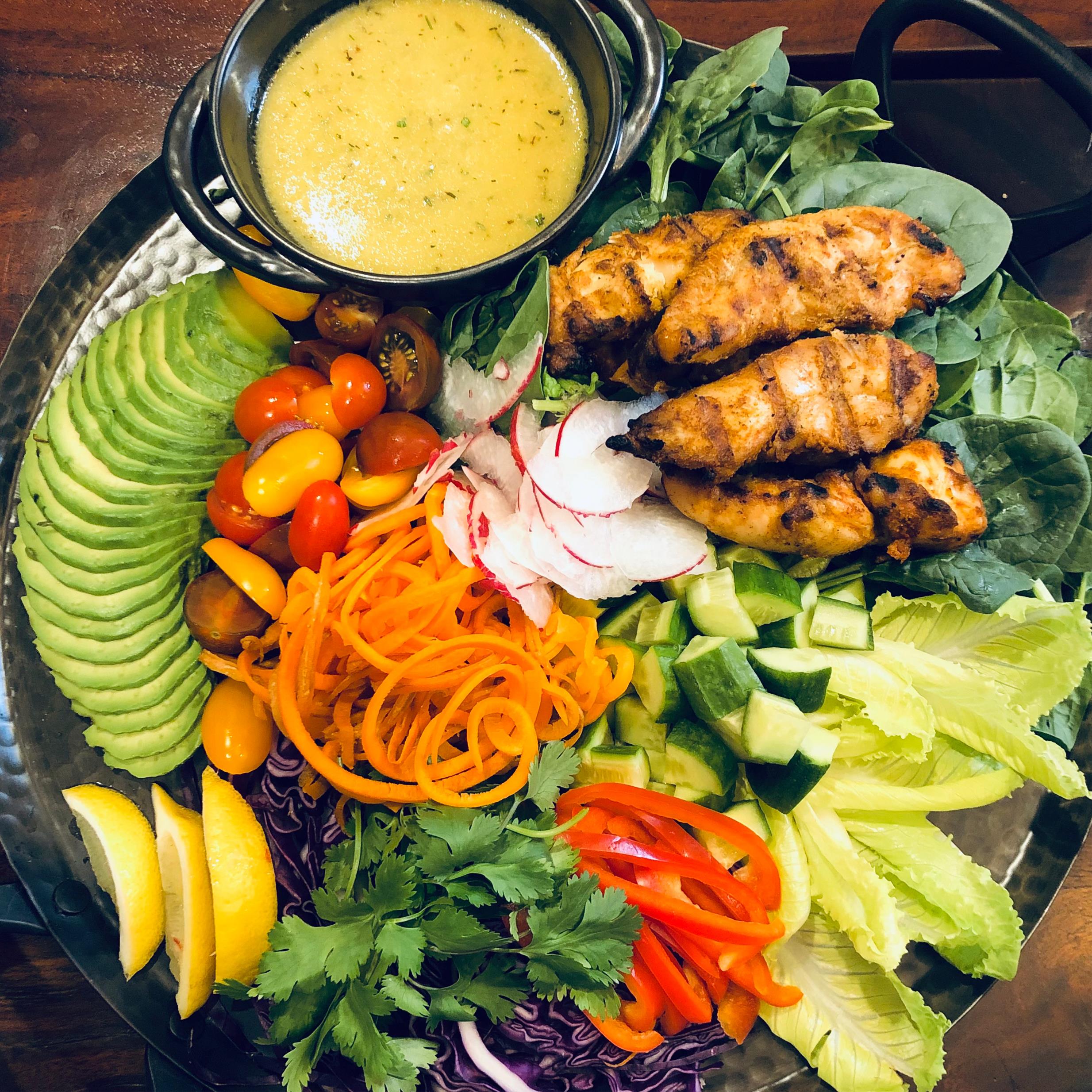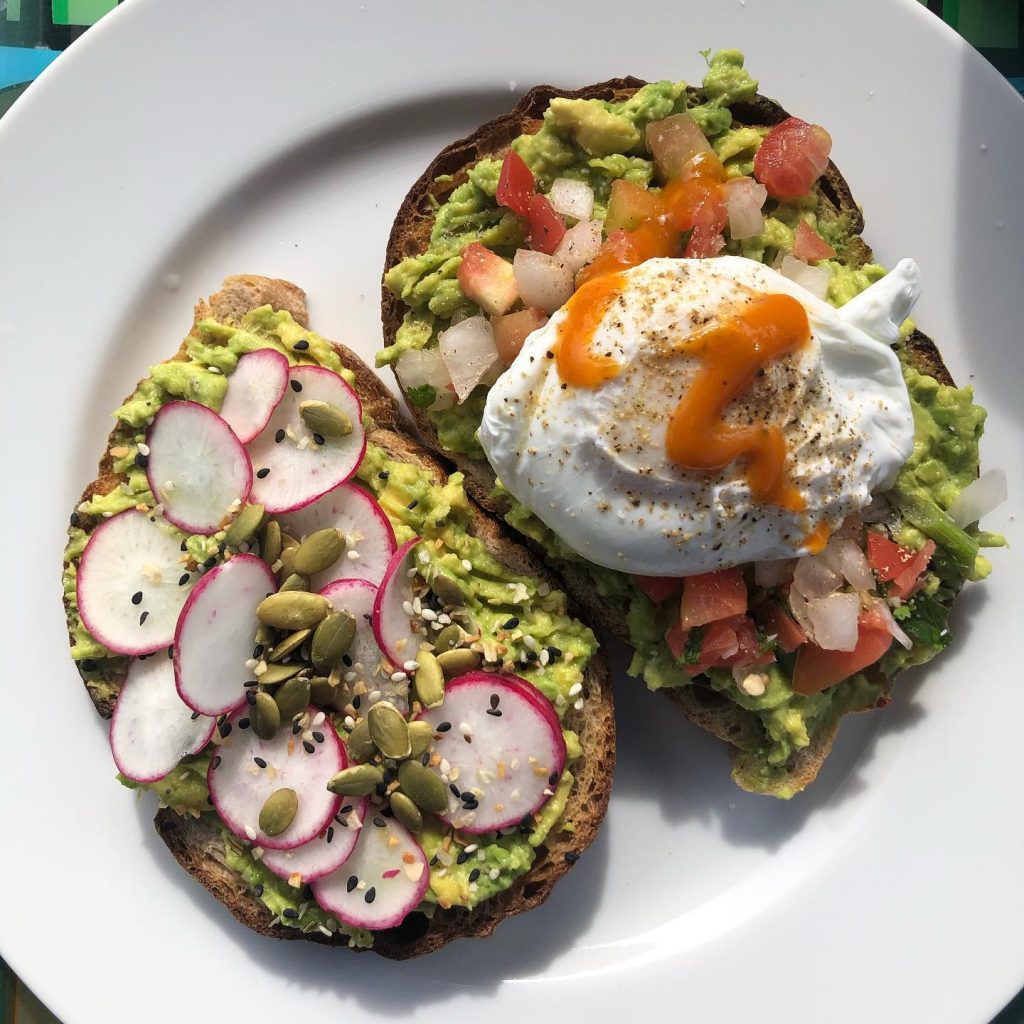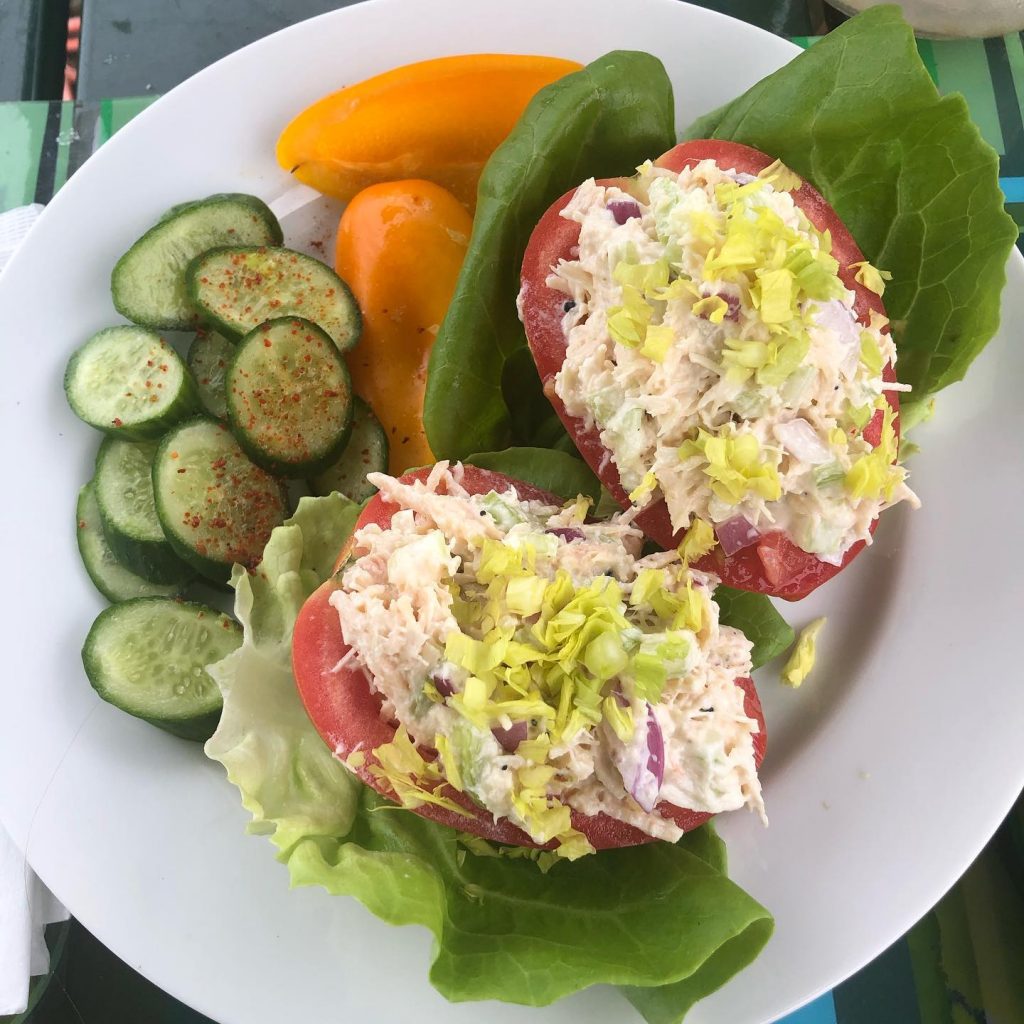
I’m always taking about the importance of eating real food and one of the best natural sweeteners is honey! After learning so much about the delicate and labor-intensive process I think honey is a real bargain! While we think of honey as a great way to sweeten tea, oats, pancakes and such I also learned of so many other benefits I never knew.
Ralph & Katie Pugh started with 3 hives in 2014. “We had bees in the eve of our log home which swarmed several times (swarms we caught) before we got them out of the house.” Kate explained.
Three hives quickly grew to 6 and now they manage 40 hives.
They extract around 100 gallons of honey each summer (1,200 pounds) which takes the two of them about three days to extract it all.
Each spring they also sell small starter hives to new and established Beekeepers. This is about half their income each year. The other half comes from selling honey and beeswax products (along with homemade jellies & blueberries we grow) at farmers markets, craft festivals and other establishments. They recently started an online store to sell their honey & beeswax lotion bars. Visit www.buysweetgumridgehoney.com to try some! They also have a Facebook page: Sweetgum Ridge Apiaries Ralph & Kate Pugh.
In February 2019 Kate completed her Master Beekeeper certification. Before Covid19, she taught kids in the 4H programs through the local schools about beekeeping, taught at a Jr. Beekeeping camp for kids and a few other summer camps, wrote an article about swarming for the local paper and routinely taught courses at the local beekeeping club meetings. “I’m always amazed by the kids. They really know a lot about the importance of honey bees and pollination.“ Says Kate.
The video clip she made gives you a quick glimpse of extracting honey.
As you know honey is a wonderful product. Full of essential vitamins & minerals, a teaspoon of honey contains 60 calories. Honey is better than sugar because it also acts as a prebiotic. Although this statement is not approved by the FDA, honey does help with seasonal allergies if consumed every day. Raw honey, which is honey that has not been heated to pasteurize it nor ultra-filtered to remove all the pollen, what you need to purchase from your local beekeeper. Grocery store honey is often a mixture of US & South American honey. Each batch is heated to over 140 degrees which kills all the naturally occurring yeasts & also all the vitamins and minerals and is ultra-filtered to remove all the pollen. This keeps the honey from crystallizing on the store shelf but it also makes the honey untraceable (many companies import adulterated-corn syrup added honey from China).
Did you know that honey can also be used on minor cuts and scrapes? Because of the enzymes the bees add to break down the sugars from the flower nectar into simpler forms, honey contains antibacterial properties which help in wound healing.
What’s the best way to keep honey? I asked Kate and here’s what she had to say:
Best to keep honey in a relatively warm place but raw honey will eventually crystallize. The rate at which honey crystallizes depends on the flowers the nectar is collected from. Nectar higher in glucose vs fructose crystallizes faster because only the glucose forms crystals. Sometimes it forms big chunky crystals and sometimes fine crystals, again depends on the plant the nectar comes from. It’s the pollen, wax, air bubbles and any other small particulates in the honey that the crystals form on. Crystallized honey has not “gone bad”. To re-liquefy it boil some water and remove from heat source. Place bottle in the hot water. Stir occasionally. Do not microwave. It destroys all the good stuff in honey. Honey (specifically the fructose part of honey) is naturally hygroscopic. So it soaks up moisture from the air (which is why it’s a good wound healer because it sucks up moisture from the wound & it has antibacterial properties). When we extract honey we make sure the water content of the honey is 18.6% or lower. Nectar at the time it is gathered is very high in water. The bees fan the honey with their wings to reduce the water content and then add the wax layer (also called capping the honey) when the honey is ripe (or around 18.6%). We don’t extract unripe honey because with a high moisture content it can cause the honey to ferment (honey has naturally occurring yeasts in it). So always keep your cap on the bottle of honey went not in use.
And some tips for when cooking with honey:
- Reduce the liquid in recipe by 1/4 cup for each cup of honey used
- Honey has 1.5 times the sweetening power of sugar
- Measure honey with a greased utensil. (that helps it slide off!)
- Reduce the cooking temp of final product by 25 degrees
(This is from The Beekeepers Handbook by Diana Sammataro & Alphonse Avitabile), Kate’s favorite beekeeping book.
So the next time you sweeten up a meal with delicious honey just think of all the effort those beekeepers have but into that jar!



